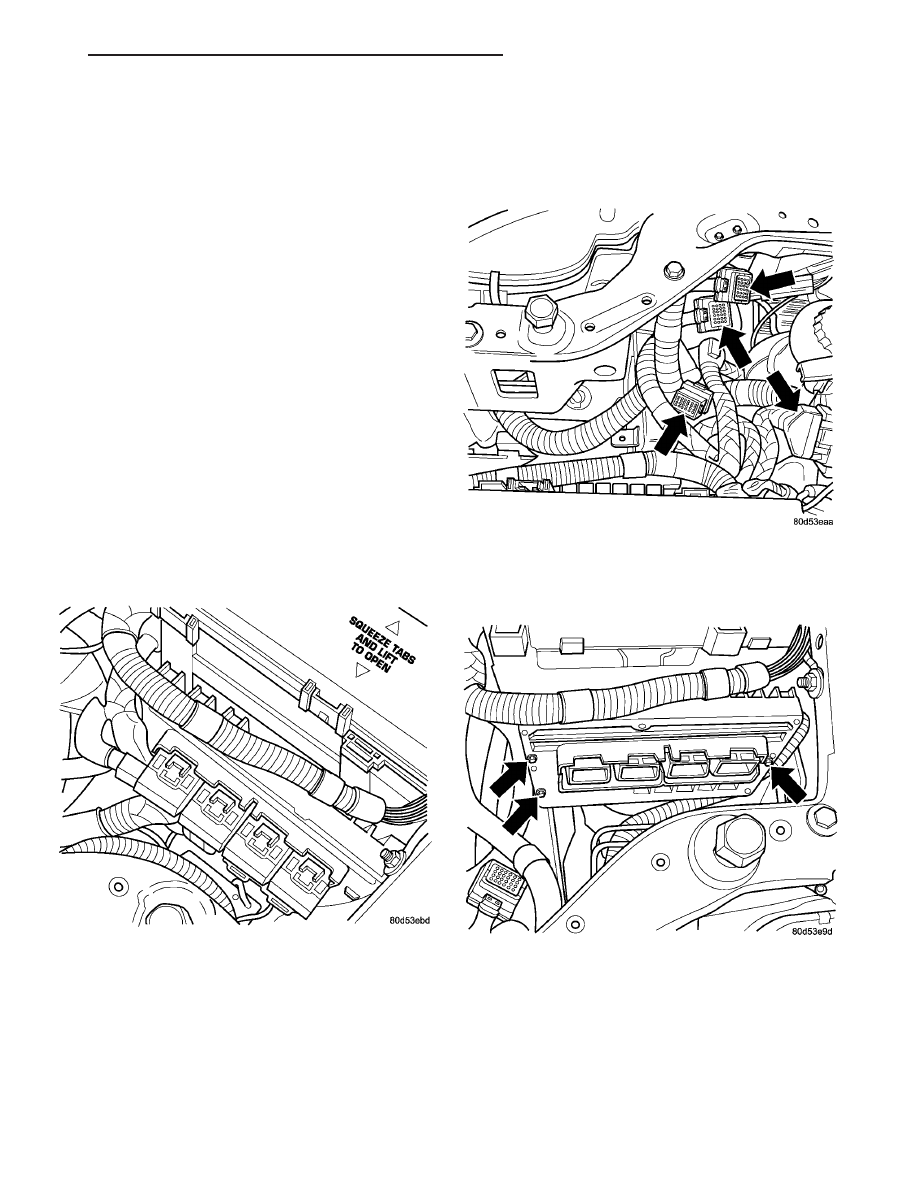Chrysler 300M, Dodge Interpid. Manual - part 65

(4) Select Quick Learn Procedure. Follow the
instructions of the DRB to perform the Quick Learn
Procedure.
REMOVAL
USE THE DRBIII
t SCAN TOOL TO REPRO-
GRAM THE NEW PCM WITH THE VEHICLES
ORIGINAL IDENTIFICATION NUMBER (VIN)
AND THE VEHICLES ORIGINAL MILEAGE. IF
THIS STEP IS NOT DONE A DIAGNOSTIC
TROUBLE CODE (DTC) MAY BE SET.
The PCM engine control strategy prevents reduced
idle speeds until after the engine operates for 320 km
(200 miles). If the PCM is replaced after 320 km (200
miles) of usage, update the mileage and vehicle iden-
tification number (VIN) in the new PCM. Use the
DRBIII
t scan tool to change the mileage and VIN in
the PCM. If this step is not done a diagnostic trouble
code (DTC) may be set and SKIM must be done or
car will not start if it is a SKIM equipped car. If a
SKIM car you must do a secret key transfer also.
Refer to the appropriate Powertrain Diagnostic Man-
ual and the DRBIII
t scan tool.
To avoid possible voltage spike damage to PCM,
ignition key must be off, and the negative battery
cable must be disconnected before unplugging the
PCM connectors. Note radio programs.
(1) Unbolt the washer bottle filler neck and repo-
sition.
(2) Disconnect the 4 PCM electrical connector.
(3) Reposition wiring harness out of the way (Fig.
7).
(4) Remove the 3 fasteners from PCM mounting
(Fig. 8).
NGC CONTROLLER LOCATION
Fig. 7 NGC CONNECTORS
Fig. 8 NGC MOUNTING
LH
ELECTRONIC CONTROL MODULES
8E - 13
POWERTRAIN CONTROL MODULE (Continued)